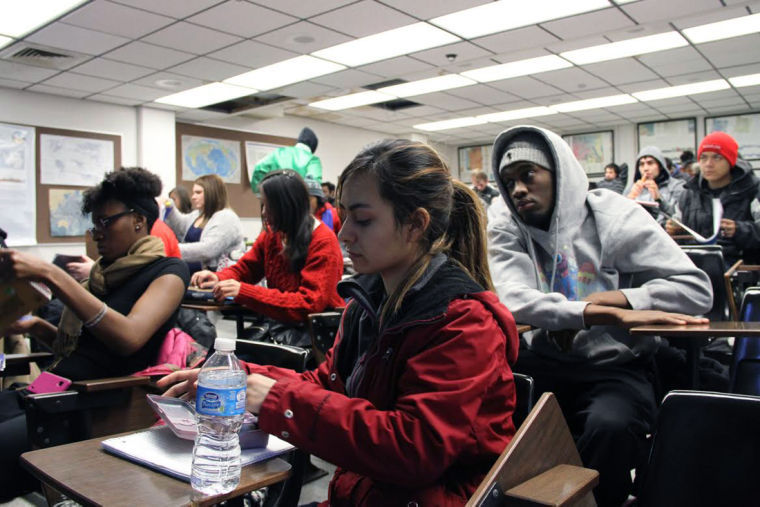Retention woes trouble NIU
February 26, 2014
Correction: In the Wednesday article “Retention woes trouble NIU,” the Northern Star incorrectly reported that NIU spokesman Paul Palian had said “part of the reason for the decrease in student enrollment is due to lack of communication among students and faculty.” Palian said the university needs to better communicate with students to let students know about resources that are available to them.
Palian also did not say faculty are looking into the issue of retention; the president, provost’s office, Student Affairs and Enrollment Management and staff that report to them are working on retention.
NIU’s enrollment has taken another hit, as there are 1,631 fewer students enrolled this spring than there were in fall.
Enrollment typically declines from fall to spring as students graduate; however, NIU lost 311 freshmen and 544 transfer students for reasons other than graduation between the semesters.
There are now 19,507 students attending NIU while enrollment was 21,138 in the fall.
“The spring enrollment numbers are a function of the fall enrollment numbers,” said NIU spokesman Paul Palian. “There is a drop from fall to spring, and that trend is as old as time. There have always been less in the spring than there has been in the fall.”
Spring 2013 enrollment was 20,075; in 2012, spring enrollment was 21,066.
The Northern Star obtained spring 2014 enrollment figures through a Freedom of Information Request, through which individuals and groups can request access to data and information from the government.
Finding the problem
Palian said part of the reason for the decrease in student enrollment is the university needs to better communicate with students to let students know about resources that are available to them.
“We’ve got all these resources that are dedicated to recruitment and retention that include tutoring, non-traditional student support and campus child day care centers,” Palian said. “We need to use the resources better.”
Students like Evanjelina Arredondo, senior human resources management major, think tuition is the deciding factor for students.
“I think student enrollment is decreasing because of the economy and because of the fact that it is not as good yet,” Arredondo said. “I think that it’s a financial struggle and that not all students can afford here.”
Tuition for NIU is about $13,000, making it the third-most expensive public university in Illinois, cheaper than University of Illinois at Urbana-Champaign — about $15,000 — and University of Illinois at Chicago at about $14,000.
More students are looking to start off school at community colleges as many provide general education classes and have lower tuition than four-year universities.
Retaining students
Palian said there is no specific reason as to why students are leaving, but the president, provost’s office, Student Affairs and Enrollment Management and staff that report to them are working on retention.
“It’s a hot item because the retention numbers right now have been declining and so we’ve got all of these resources that we aren’t using to their full advantage,” Palian said.
Palian said fully using NIU’s resources could help retain students.
Laura Koterbski, junior pre-physical therapy major, said one of the reasons students leave is because a lack of resources, such as tutoring centers, have hurt their grades, and it isn’t easy for transfers to adapt to life at NIU.
NIU brought in 1,881 transfers in the fall, but it lost 544 transfer students from fall to this semester for reasons other than graduation.
“They may have not done so well in the fall semester, but also the transition isn’t always easy if you come from a community college or even from high school. It’s a completely different experience that not everyone can adapt to,” Koterbski said.
Koterbski said if more academic resources were open to NIU’s students that could improve retention by making learning easier.
“I know NIU does offer some tutoring centers, but I think that if they offered more or had more open hours than maybe students would be able to go and keep their grades up,” Koterbski said.
Editor in Chief Kelly Bauer contributed to this article.



